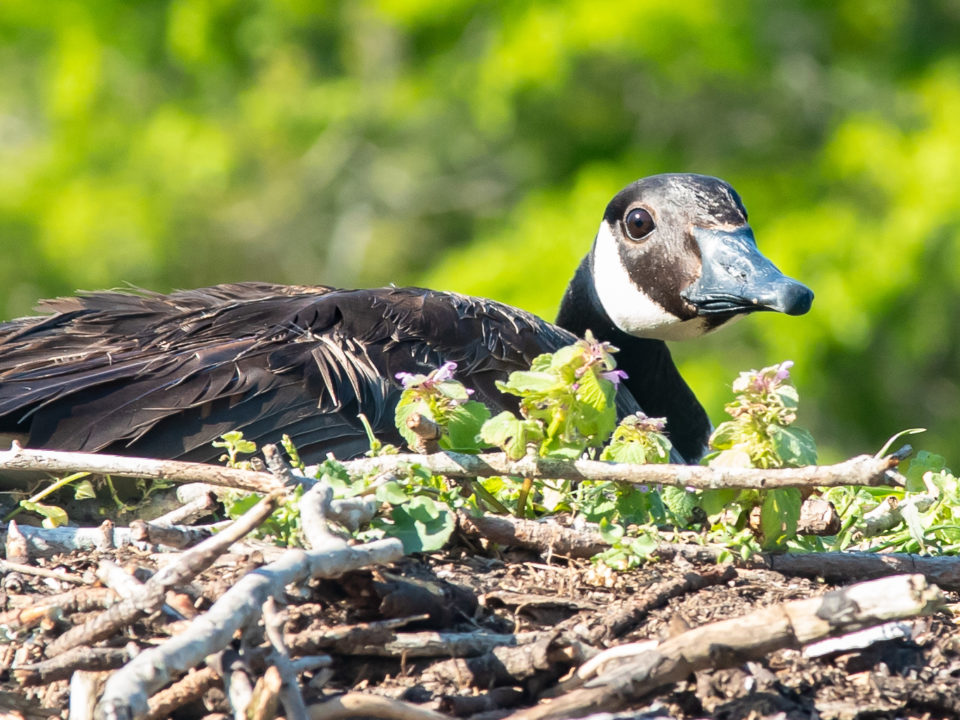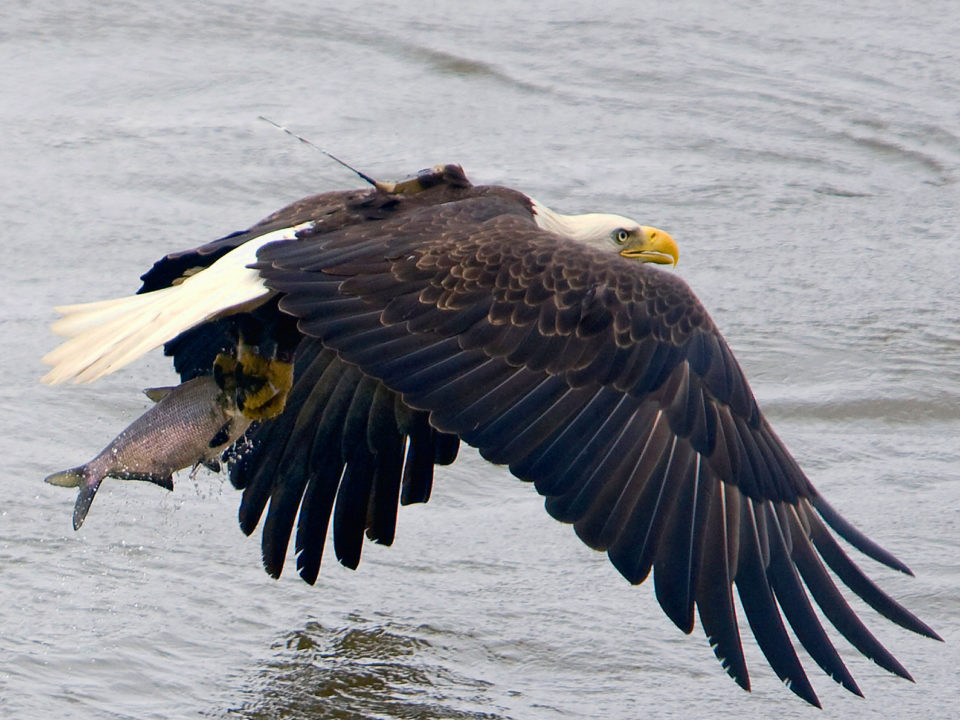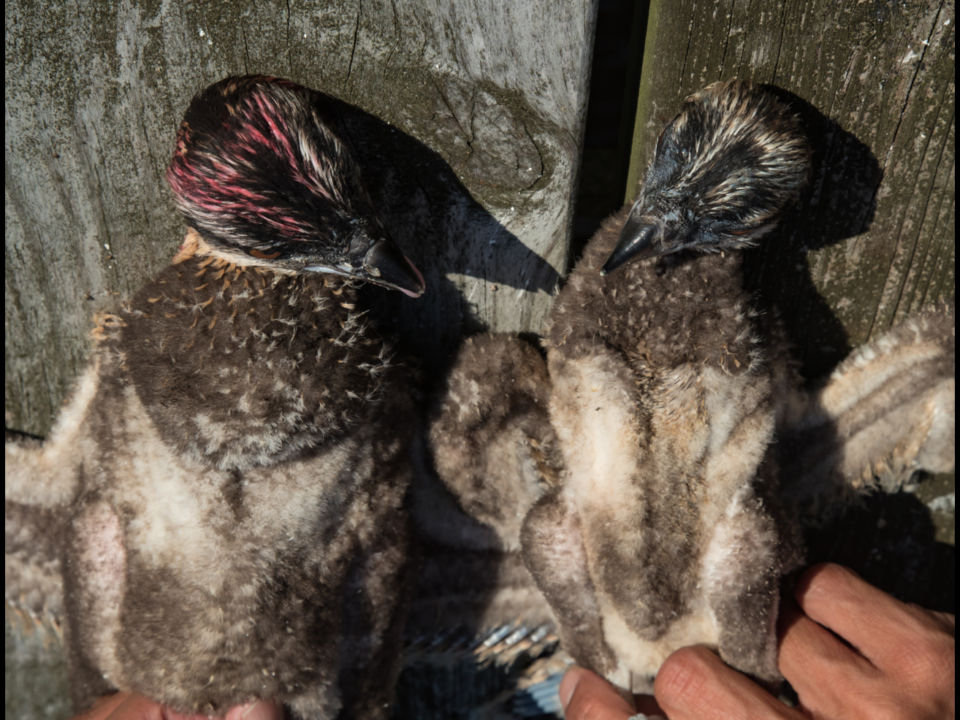CCB to investigate shorebird mortality
Kat Potter in Rwanda
June 12, 2013Camellia Remains at Nanney’s June 14
June 14, 2013
The loss of Goshen and Machi, two whimbrel included in The Center for Conservation Biology’s tracking project, to hunters near Port-Louis, Guadeloupe was a watershed event for shorebird scientists. The event forced researchers and government officials to consider the real possibility that hunting within the West Indies and the northern coast of South America may be playing a significant role in observed population declines. The key issue is whether or not current harvest levels within the region are above sustainable limits. CCB has received a grant award from the U.S. Fish and Wildlife Service to estimate sustainable mortality limits for shorebird populations, a first step in understanding this complex relationship and setting harvest limits.
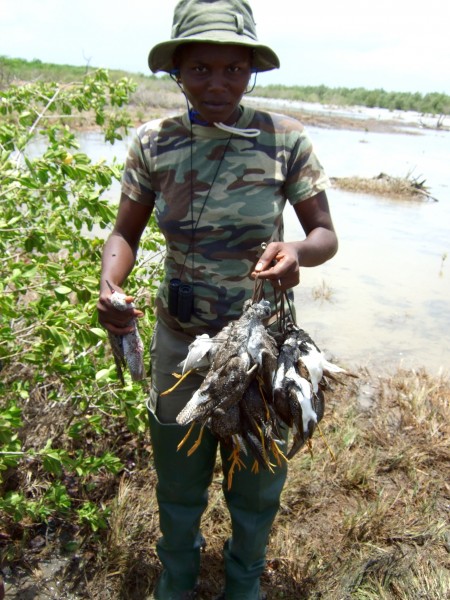
Local hunter in Guadeloupe mangrove swamp with shorebirds. Photo by Anthony Levesque.
Over the past few decades a large portion of the more than 30 shorebird species migrating along the Atlantic Flyway have declined. The underlying cause(s) of these declines are poorly understood. However, the fact that some of these populations breed in different locations, depend on different resources, and have varied winter ranges argues for either a long list of species-specific causes acting in concert or some overarching, broad-based cause. From a cursory survey of biologists within this region in 2010 it was determined that considerable hunting pressure exists at least on Guadeloupe, Martinique, Barbados, Puerto Rico, and Trinidad and Tobago, as well as, other jurisdictions within South America. The collective, annual harvest of passage shorebirds throughout the Caribbean Basin and the northern coast of South America appears to be in range of 200,000. A considerable amount of work is currently needed to quantify harvest pressure and to understand hunting policy for jurisdictions within the flyway. However, even if we had a complete understanding of current harvest rates for all species, we would be in no position to evaluate the population-level consequences of such harvest.
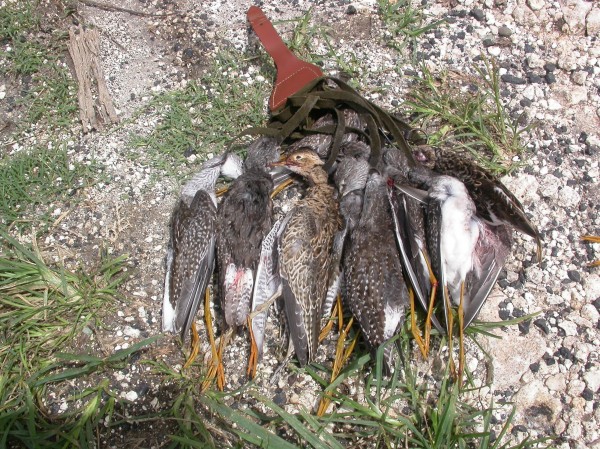
Bag of shorebirds from morning hunt on Guadeloupe. Photo by Anthony Levesque.
The joint CCB-FWS project will estimate sustainable mortality limits that will, for the first time, allow for the assessment of population-level consequences that result from mortality sources whether due to hunting, wind turbines, oil spills or other sources. Such estimates are critically important when evaluating hunting policy or assessing mortality from other sources on a flyway scale.
Written by
Bryan Watts | bdwatt@wm.edu | (757) 221-2247
June 13, 2013
Related posts
A brood of osprey in Mobjack Bay showing a well-fed chick (left) and an emaciated chick (right). The chick on the right would die the following week due to starvation. Work in Mobjack Bay over a 40+ year period has shown that both reproductive rates and food delivery rates have declined dramatically. The decline in provisioning has led to an increase in brood reduction or chick loss due to starvation. Photo by Bryan Watts.

